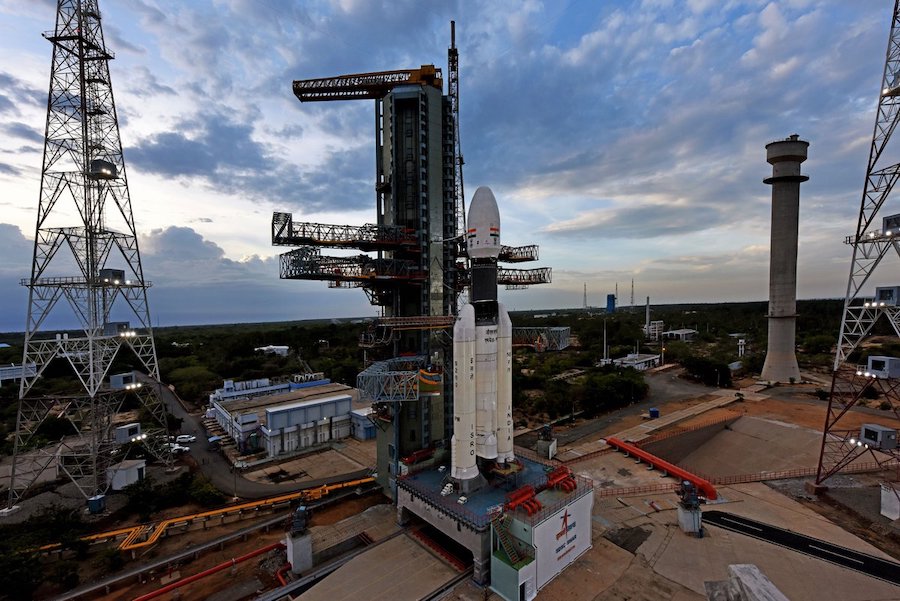
Indian engineers called off the launch of the Chandrayaan 2 lunar landing mission Sunday after observing a “technical snag” during the final hour of the countdown, India’s space agency said.
The robotic probe was counting down to liftoff from the Satish Dhawan Space Center on top of India’s GSLV Mk.3 rocket at 2121 GMT (5:21 p.m. EDT) Sunday, or 2:51 a.m. local time Monday in India.
“A technical snag was observed in (a) launch vehicle system at one hour before the launch,” the Indian Space Research Organization tweeted. “As a measure of abundant precaution, (the) Chandrayaan 2 launch has been called off for today. Revised launch date will be announced later.”
ISRO did not release any additional information about the reason for the launch postponement. IANS, an Indian news agency, reported the GSLV Mk.3 rocket would have to be drained of its liquid propellants and returned to the Vehicle Assembly Building at the Satish Dhawan Space Center on India’s southeastern coast for further investigation.
According to IANS, that process will take 10 days before managers can fix the problem and prepare for another launch attempt.
In May, ISRO officials said the Chandrayaan 2 mission’s targeted launch window this month opened July 9 and extends through Tuesday, July 16 (Monday, July 15 in the United States). Chandrayaan 2 has missed a series of previous launch windows as engineers completed construction and testing on the mission, which includes orbiter, lander and rover elements that will separate after arriving at the moon.

Once it takes off, the GSLV Mk.3 rocket will inject the 8,547-pound (3,877-kilogram) Chandrayaan 2 spacecraft into an elliptical orbit stretching more than 24,000 miles (39,000 kilometers) around Earth. Chandrayaan 2 will use its own propulsion system to raise its orbit and break free of Earth’s gravitational grip, with arrival in orbit around the moon expected roughly three weeks after liftoff.
Once in lunar orbit, Chandrayaan 2 will maneuver closer to the moon before separation of the landing craft from the orbiter.
If the mission had launched Sunday, landing on the moon was scheduled for Sept. 6. A new landing date will depend on when the mission departs Earth.
The $142 million Chandrayaan 2 mission’s lander is targeting a touchdown at an unexplored site located on the near side of the moon at 70.9 degrees south latitude, closer to the moon’s south pole than any previous probe. The landing module is named Vikram for Vikram Sarabhai, the father of India’s space program, and will deploy the Pragyan rover, named for the Sanskrit word for “wisdom.”
The stationary lander and rover are designed to last 14 days — equivalent to half of a lunar day — until the sun sets at the landing site, robbing the vehicles of electrical power as temperatures plummet to near minus 300 degrees Fahrenheit (minus 183 degrees Celsius). The rover and lander carry a suite of scientific instruments, including cameras and spectrometers to measure the composition of the rocks at the landing site.
If the landing is successful, India will become the fourth nation to accomplish a controlled soft touchdown on the moon, following landings by the Soviet Union, the United States and China.
The Chandrayaan 2 orbiter will conduct its own one-year science mission, taking high-resolution mapping imagery and probing permanently-shadowed craters at the lunar poles with a dual-frequency radar to help better locate water ice deposits.
Email the author.
Follow Stephen Clark on Twitter: @StephenClark1.
















